This winter, you can carve the fresh powder of the backcountry on a pair of high-performance, eco-friendly skis designed by world-famous athletes and made from a material produced by microscopic algae. Yes, algae.
The skis, made by a rather unconventional Bay Area biotech company, are a new addition to the long list of products currently being made from chemicals and compounds produced by specially engineered microbes – a field known as biomanufacturing. Driven to offer smarter, more sustainable materials, fuels, foods, and medicines, more and more companies are turning to biomanufacturing over traditional methods, and the Department of Energy’s Lawrence Berkeley National Laboratory (Berkeley Lab) is playing a key role in this 21st century industrial revolution.
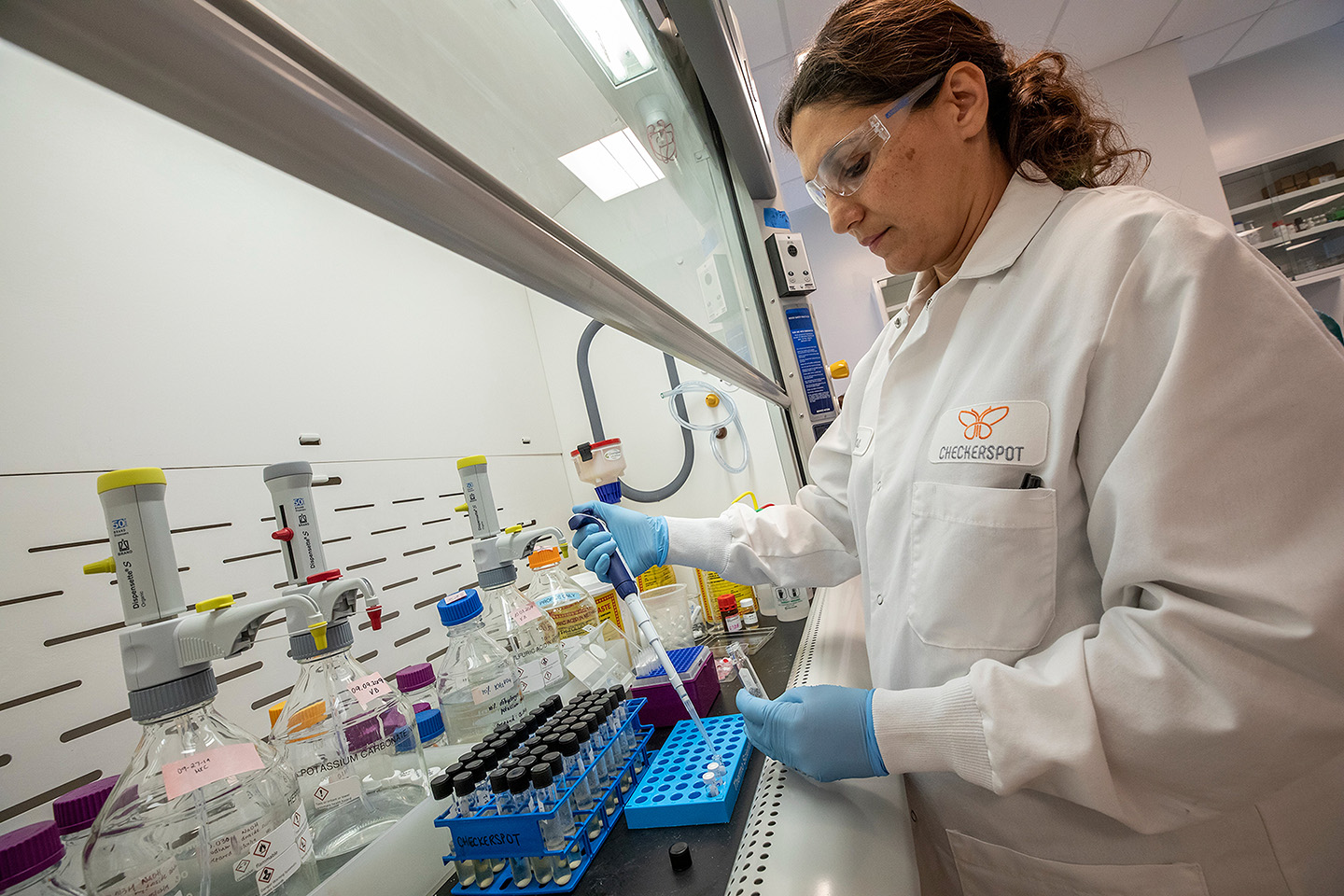
Putting natural factories to work
Biomanufacturing first began in the early 1900s, when scientists discovered they could exploit microbes’ natural fermentation processes to efficiently generate large quantities of important commodities, such as acetone and rubber precursors. These early applications were groundbreaking in their own right, but biomanufacturing truly exploded in the 2000s. The advent of fast, automated DNA sequencing and editing made it possible for researchers to trace the genes involved in making an organic compound of interest and to insert them into a different “host” organism – typically another species of microbe. Other genes that enhance host productivity and efficiency are also often added.
The resulting microbes can, in theory, produce nearly any biologically derived substance, and the start-to-finish process is often designed to use fewer natural resources than traditional methods. The process can also use sustainable inputs, such as plant matter from renewable crops or agricultural waste, or greenhouse gases.
Despite the immense potential of biomanufacturing, advancing promising science past the lab bench remains a major roadblock on the path to commercialization.
The problem of scale
Researchers around the world have engineered strains of microbes capable of producing a dizzying range of valuable compounds in small quantities under laboratory conditions, but developing the processes for a commercial or even a pilot scale isn’t as simple as multiplying the recipe. In fact, trying to increase production is fraught with challenges at every step, from fermentation efficiency to product purification. And the sort of expertly staffed scientific facilities where research teams can refine, test, and analyze their production pathway – an iterative cycle of research that is necessary to transform a brilliant eureka moment in the lab into a real-world product – are scarce.
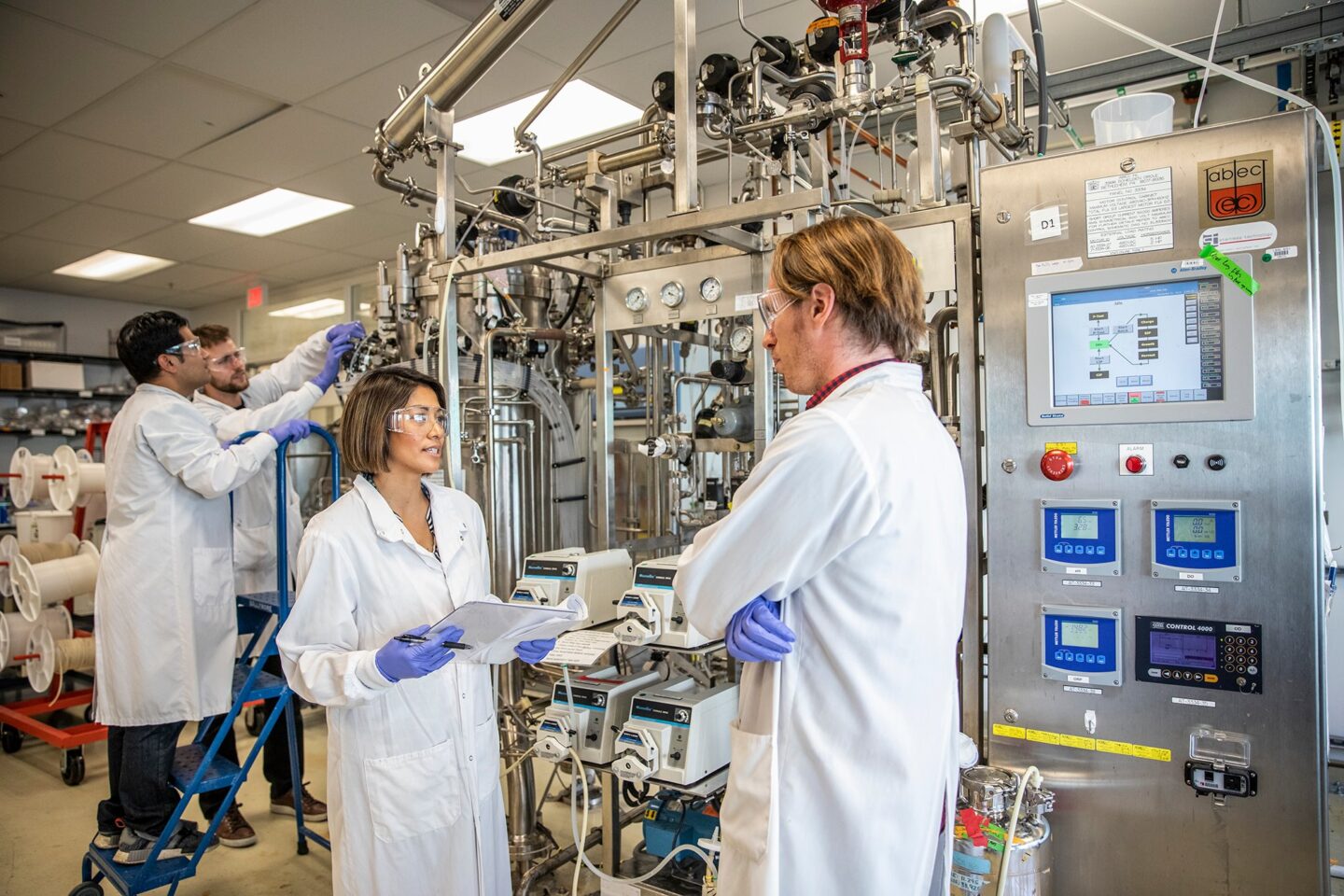
Berkeley Lab’s Advanced Biofuels and Bioproducts Process Development Unit (ABPDU) is one of those rare entities. Strategically located in the biotech-dense East Bay region of California’s San Francisco Bay Area, the ABPDU has helped dozens of companies to scale up their processes. Through grants from the DOE Bioenergy Technology Office (BETO), the unit can even help mission-oriented startups that are in the very early stages, when all the company has is a promising host organism. Checkerspot, the company behind the skis, began its research and development journey at the ABPDU through a BETO grant.
“Our company formed because we had this single-celled microalgae that produces high amounts of triglyceride oils, which have an array of applications in food, personal care, and materials – including plastic alternatives,” said Checkerspot co-founder and Chief Scientific Officer Scott Franklin. “We were interested in further developing the microalgae as a sustainable platform, and we decided to focus on materials because there’s really not a lot of novel or new materials development across a huge range of industries. Basically, people have been relying on what comes out of a barrel of oil for new polymers for a long time.”
Bringing a biomanufactured product to the shelves

Checkerspot CEO Charles Dimmler, left, and CSO Scott Franklin.
The company was entirely self-funded when it launched. “We were completely bootstrapped. We were writing our own checks,” said Franklin. But from the outset, he and co-founder Charles Dimmler had a clear goal to not only develop the technology to produce triglyceride polymers to build new materials, but also to rapidly create a consumer brand featuring products made from the materials.
Experienced in the biotech business sector, Franklin and Dimmler recognized that success hinged on being able to cater their goods to the type of customer who recognizes the value added by biomanufactured materials: sustainability and exceptional physical properties.
As outdoor enthusiasts themselves, a recreational brand was the perfect fit. And choosing the initial proof-of-concept product was easy: A strong yet lightweight, flexible, and energy-damping polymer would have obvious advantages for a pair of skis, which typically use multiple types of plastic to attain these characteristics.
But before any skis could be made, Checkerspot’s scientists needed to start at the beginning. Working alongside an ABPDU team led by Eric Sundstrom, Franklin and his colleagues began by screening their algae strains to select the ones that produced the highest yields of oil. Then, they experimented with how to most efficiently propagate these strains at the one-liter scale. This phase alone took weeks. A few months later, Checkerspot came back to the ABPDU to push the technology to 300-liter fermentations – the scale needed to generate multiple kilograms of the triglycerides that are the basis of the company’s polymers. Once this scale was realized, the company had enough of the oil to begin creating ski prototypes.
Currently, Checkerspot’s algae oils, which are still being producing at the 300-liter scale, are sent to a contractor in Minnesota for chemical conversion processes before being shipped to the company’s Design Lab in Salt Lake City for final conversion into polymers of the ski material. The entire ski is then fabricated at the same site.
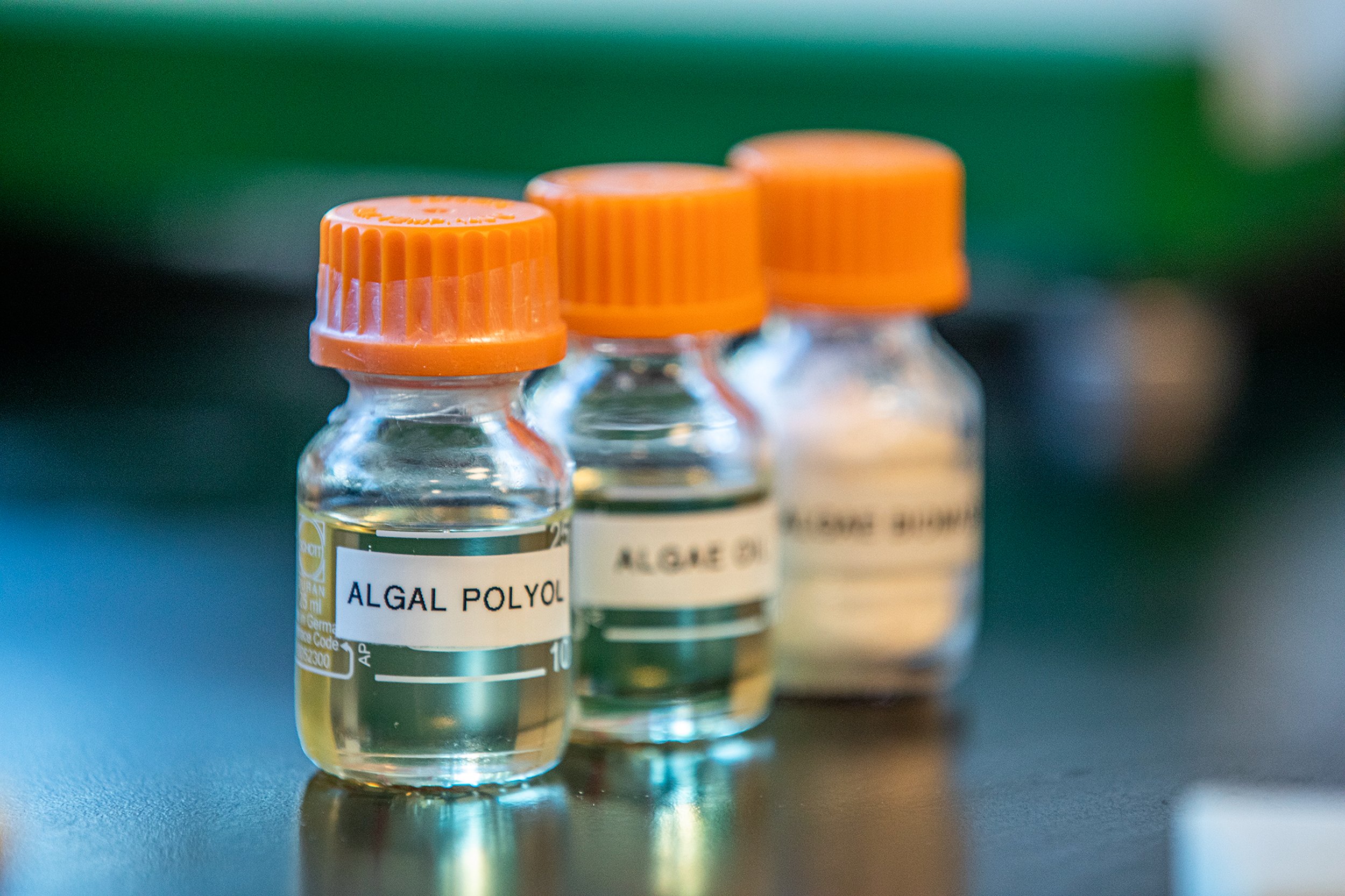
Checkerspot’s purified algae oils and converted polymers in vials.
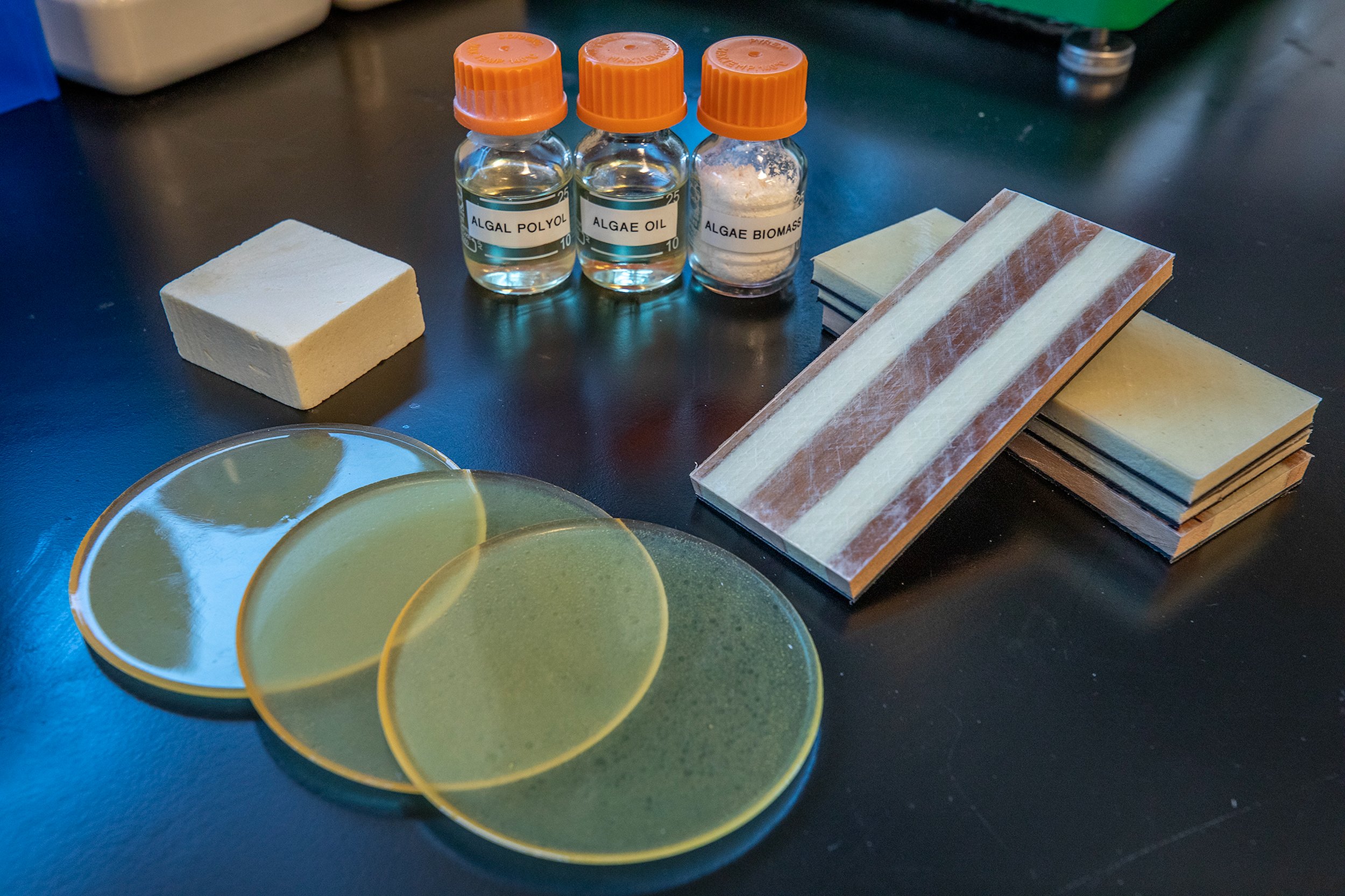
Several materials that can be made from the polymers.
In July, the company’s outdoor brand, WNDR Alpine, launched its first ski model, called Intention 110. “The feedback has been tremendous,” said Dimmler, who is also Checkerspot’s CEO. “We’re enthusiastic about the potential for the brand to be able to satisfy the demand that exists not only for better-performing materials, but also materials that have a lighter environmental impact.” The Checkerspot team is now working to add more ski models to their line – ones made of an even higher proportion of sustainable polymers – and to develop moisture-wicking fabric coatings. They frequently return to the ABPDU to optimize their processes and expand their palette of algae-derived polymers.
“Biology unlocks this potential to enable a more intentional design of materials. And being able to make prototypes rapidly, to animate the possibilities, is really at the core of what we’re doing at Checkerspot,” said Dimmer. “The ABPDU has been instrumental in showing that we can make these prototypes a reality.”
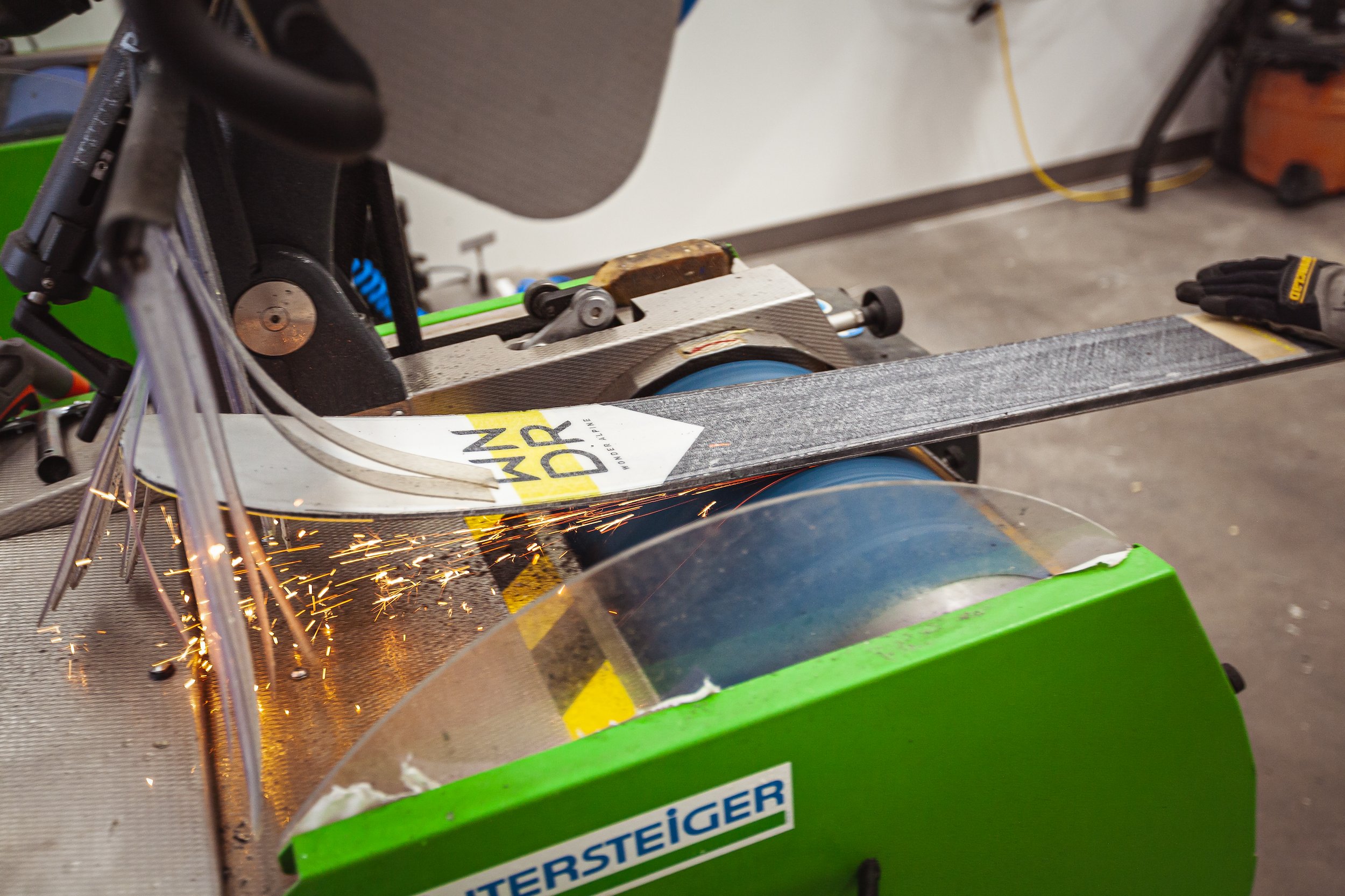
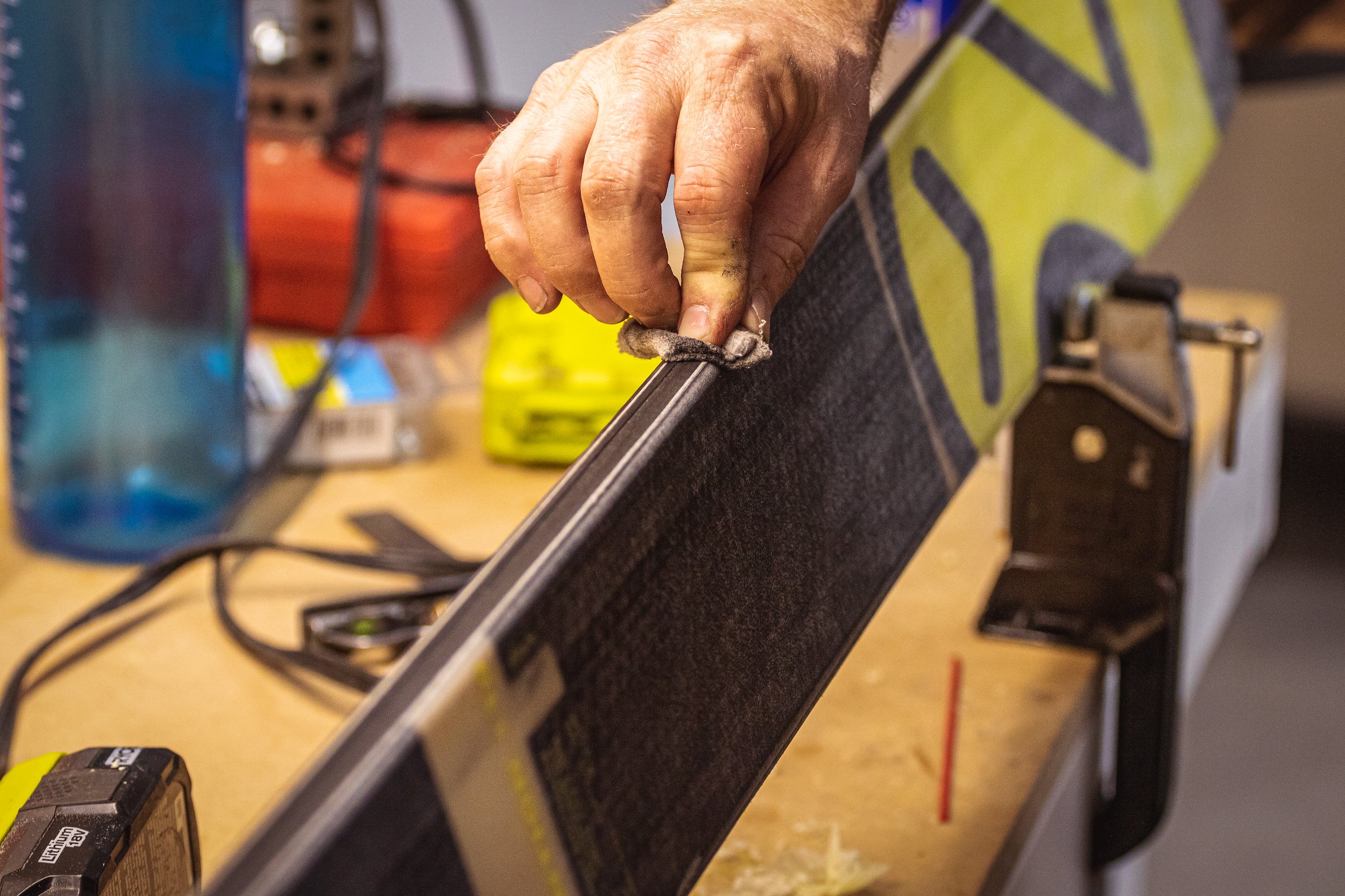
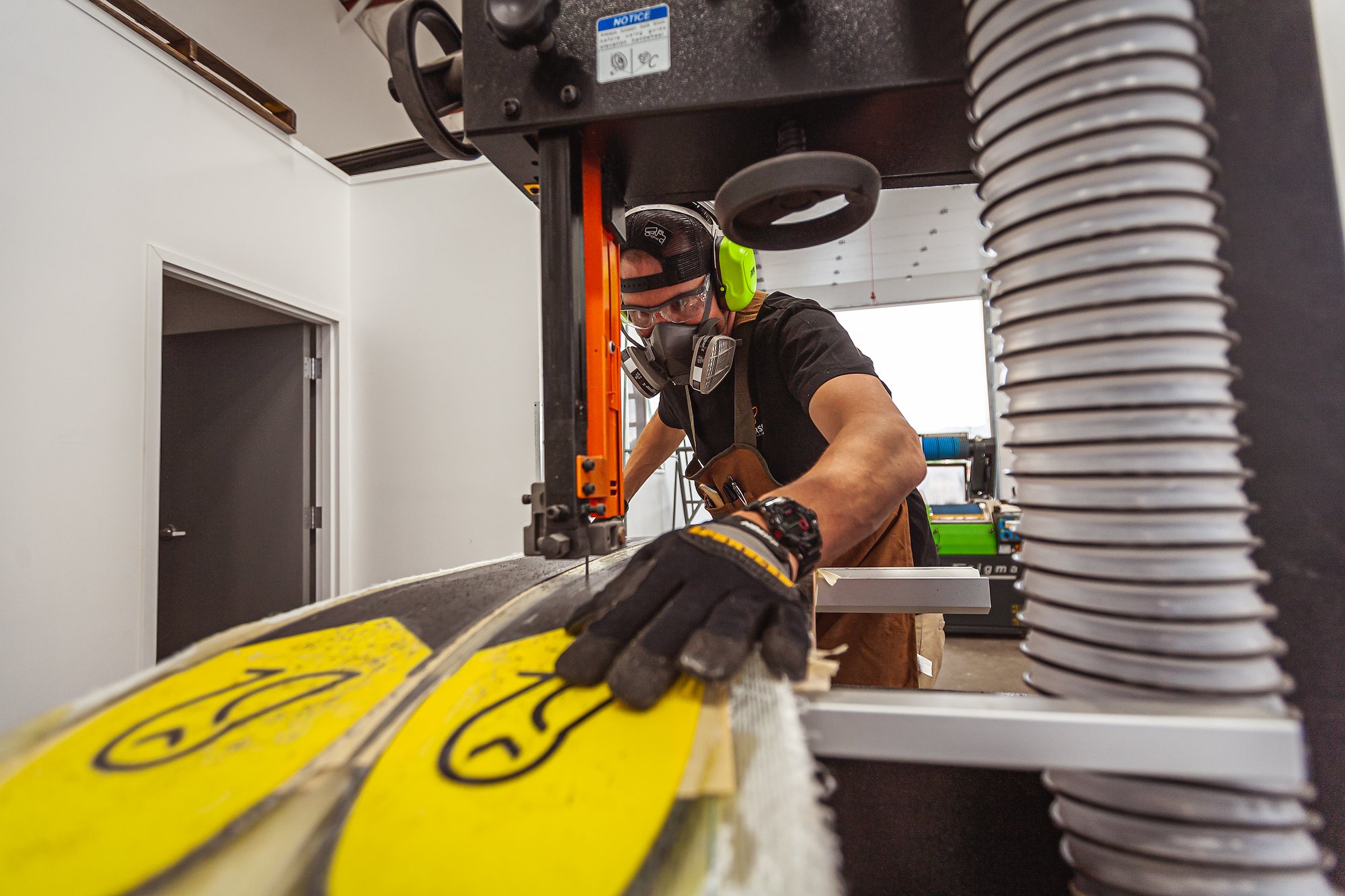
The polymers are shipped to the WNDR Alpine Design Lab in Salt Lake City, Utah, where they are formulated into ski components and the entire ski is constructed. (Credit: Carson Meyer)
Impact on a large scale
Sundstrom and Jan-Philip Prahl, another member of the ABPDU team who worked with Checkerspot, said they are equally thrilled with Checkerspot’s progress. “This collaboration is a great example of what we do, which is to act as a bridge between basic science and industry,” said Sundstrom, who is a staff research scientist at ABPDU and has previous experience working with algal hosts. “It’s a great case study of why that matters, because when (Checkerspot) came to us, it was barely even incorporated.”
Prahl, a senior process engineer, said the company’s team “had a great amount of knowledge about the system, but not the means to deal with the challenges associated with scale-up. So, in cases like this, we are basically pioneering the work together, and it’s incredibly rewarding when you see an actual product on the market.”
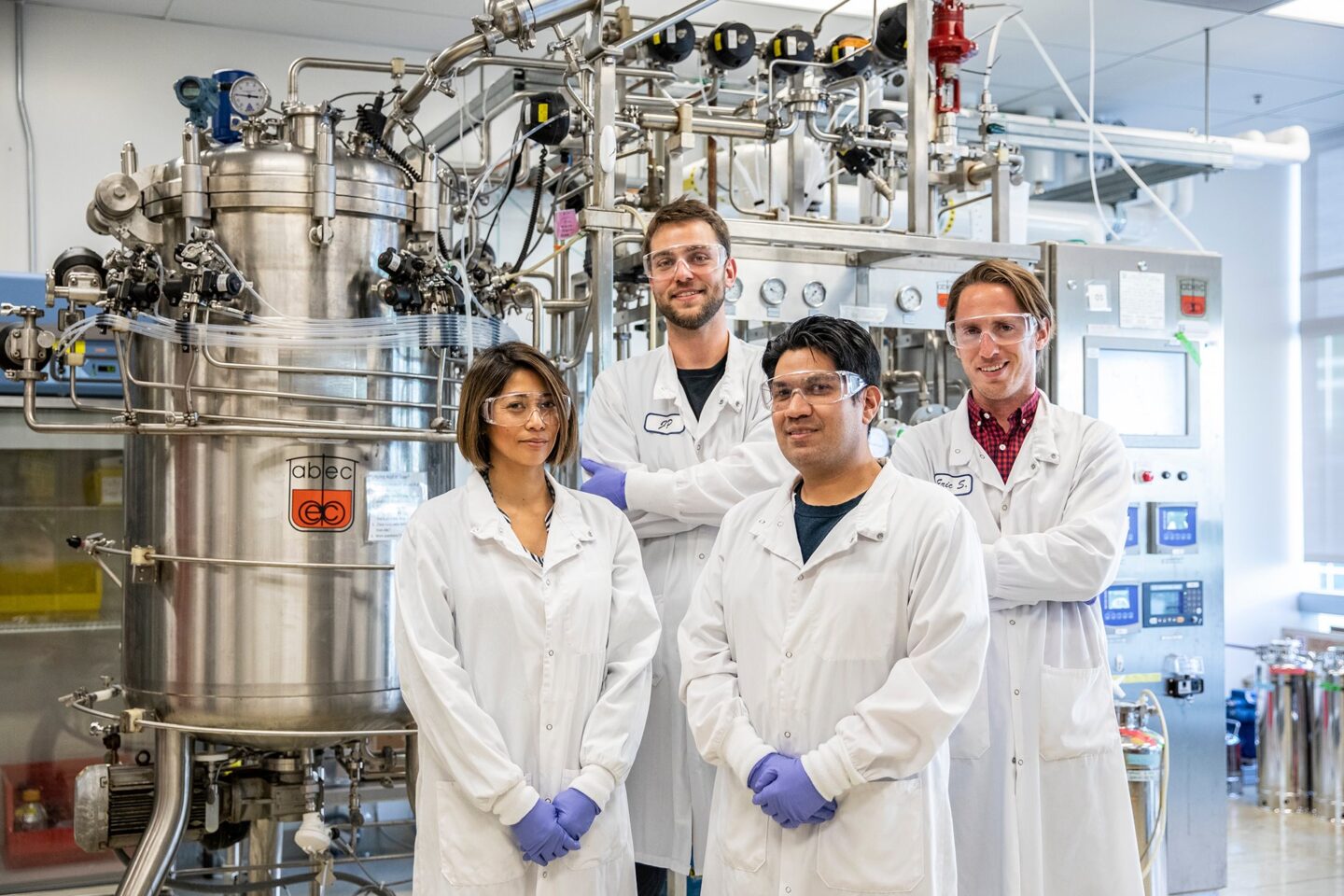
###
Lawrence Berkeley National Laboratory (Berkeley Lab) is committed to delivering solutions for humankind through research in clean energy, a healthy planet, and discovery science. Founded in 1931 on the belief that the biggest problems are best addressed by teams, Berkeley Lab and its scientists have been recognized with 16 Nobel Prizes. Researchers from around the world rely on the lab’s world-class scientific facilities for their own pioneering research. Berkeley Lab is a multiprogram national laboratory managed by the University of California for the U.S. Department of Energy’s Office of Science.
DOE’s Office of Science is the single largest supporter of basic research in the physical sciences in the United States, and is working to address some of the most pressing challenges of our time. For more information, please visit energy.gov/science.
